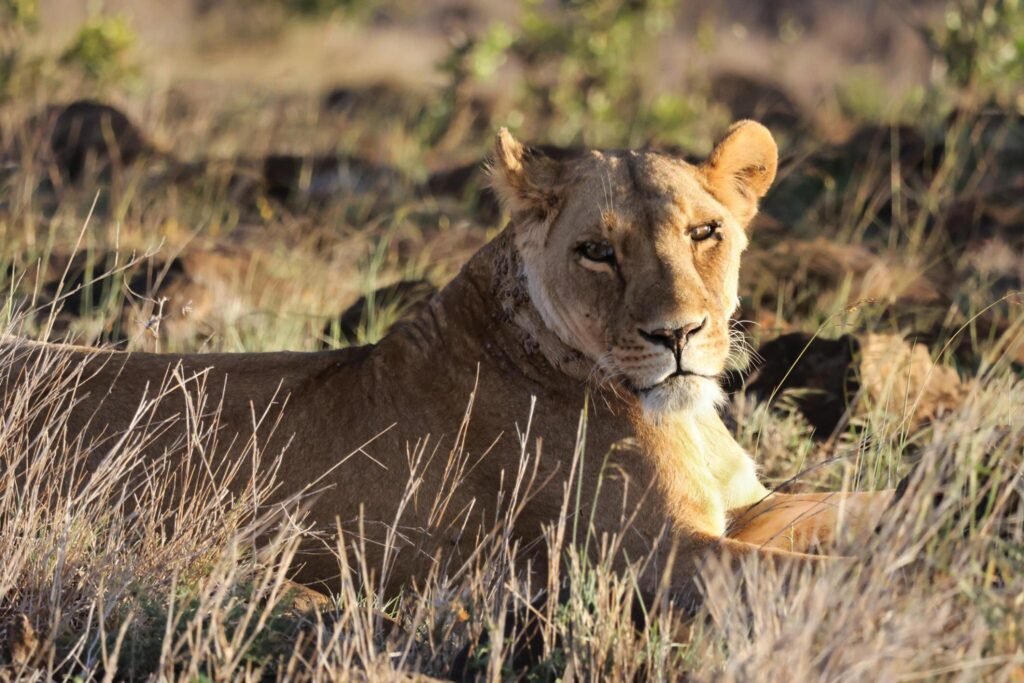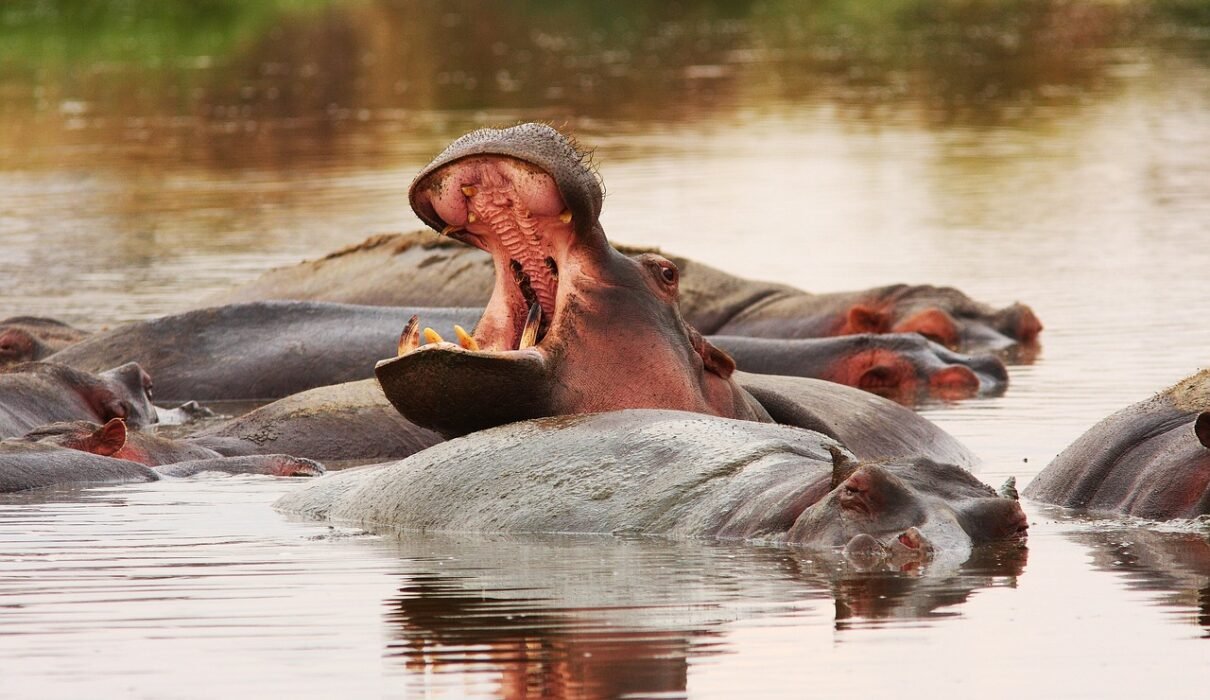Big Five Safari in Tanzania . Tanzania is one of the best destinations in the world for Big Five safaris, offering thrilling encounters with Africa’s most iconic wildlife: lions, leopards, elephants, buffaloes, and rhinoceroses. From the vast Serengeti to the Ngorongoro Crater, Tanzania provides an unparalleled safari experience. In this guide, we’ll explore the best places to see the Big Five in Tanzania, essential safari tips, and how to plan an unforgettable wildlife adventure.
Explore more about Big Five safaris in Tanzania here

Big Five Safari in Tanzania : What Are the Big Five?
The term “Big Five” originally referred to the five most challenging animals to hunt in Africa, but today it represents the most iconic species to spot on safari. The Big Five includes:
- Lions: Known as the “King of the Jungle,” lions are found in most of Tanzania’s national parks.
- Leopards: Elusive and graceful, leopards are harder to spot but can often be seen lounging in trees.
- Elephants: Africa’s largest land animals, elephants are common in Tanzania’s national parks.
- Buffaloes: African buffaloes are powerful and unpredictable, often seen in large herds.
- Rhinoceroses: Both black and white rhinos can be found in Tanzania, although they are more elusive due to poaching threats.
Learn more about the Big Five and their conservation.
Big Five Safari in Tanzania : Best Parks to See the Big Five in Tanzania
1. Serengeti National Park
The Serengeti National Park is one of the most famous safari destinations in the world and offers one of the best opportunities to see the Big Five. Known for the annual Great Migration, the Serengeti is home to large populations of lions, leopards, and elephants. The park’s vast plains also host buffalo herds and rhinos, although rhino sightings are rarer.
- Why Visit: Home to the Great Migration and the best chances to see lions and leopards.
- Best Time: June to October for wildlife viewing, particularly during the migration.
Discover more about the Serengeti here.
2. Ngorongoro Crater
The Ngorongoro Crater is a UNESCO World Heritage Site and is often referred to as the “Garden of Eden” due to its incredible density of wildlife. It’s one of the best places in Tanzania to spot all members of the Big Five, especially the endangered black rhinoceros. The crater’s unique ecosystem provides a natural enclosure for animals, making it easier to see large predators like lions and leopards.
- Why Visit: High chance of seeing all Big Five in one game drive.
- Best Time: June to October for peak wildlife viewing.
Learn more about visiting Ngorongoro Crater here.
3. Tarangire National Park
Tarangire National Park is known for its large elephant populations and scenic landscapes dotted with iconic baobab trees. While leopards and lions are also present, Tarangire stands out for its elephants, which can be seen in massive herds during the dry season.
- Why Visit: Great for elephants and a quieter alternative to Serengeti.
- Best Time: June to October during the dry season when animals gather around water sources.
Find out more about Tarangire National Park here.
4. Selous Game Reserve (Nyerere National Park)
The Selous Game Reserve, now part of Nyerere National Park, is one of the largest wildlife reserves in the world. This remote and less crowded park offers exceptional opportunities to see elephants, lions, and leopards, although rhinos are rare. Selous is also one of the few places in Tanzania where boat safaris are possible, allowing for a unique perspective on wildlife.
- Why Visit: Remote, less touristy, and offers diverse wildlife experiences.
- Best Time: June to October for dry season safaris.
Learn more about Selous Game Reserve here.
5. Ruaha National Park
Ruaha National Park is Tanzania’s largest national park and one of the least visited, making it an ideal destination for those looking for an off-the-beaten-path Big Five safari. Ruaha is home to significant populations of lions and elephants, as well as elusive leopards and buffaloes. While rhinos are rare, Ruaha’s rugged beauty and abundant wildlife make it a top choice for experienced safari-goers.
- Why Visit: Fewer tourists, abundant lion populations, and stunning landscapes.
- Best Time: June to October for the dry season.
Explore more about Ruaha National Park here.
Big Five Safari in Tanzania : Best Time for a Big Five Safari in Tanzania
The best time to spot the Big Five in Tanzania is during the dry season, which runs from June to October. During this time, animals are more easily spotted as they gather around water sources. The short rainy season, from November to December, is also a good time to visit, with fewer tourists and lush landscapes.
- Dry Season (June to October): Best time for game viewing as animals congregate around rivers and waterholes.
- Green Season (November to May): Excellent for birdwatching and lush landscapes, with fewer tourists.
Learn more about the best times to visit Tanzania for a Big Five safari.
Big Five Safari in Tanzania : Safari Tips for Spotting the Big Five
Spotting all members of the Big Five requires patience, a knowledgeable guide, and sometimes a bit of luck. Here are some tips to increase your chances of seeing these iconic animals:
- Hire Experienced Guides: A knowledgeable guide can help you track elusive animals like leopards and rhinos.
- Go on Early Morning and Late Afternoon Drives: These are the best times to spot predators like lions and leopards, as they are more active during cooler parts of the day.
- Bring Binoculars: To spot animals from a distance, especially in vast areas like the Serengeti.
- Be Patient: Rhinos and leopards are particularly elusive, so patience is key to spotting them.
Check out more tips for a successful Big Five safari.
Big Five Safari in Tanzania : Conservation Efforts to Protect the Big Five
Conservation efforts in Tanzania are crucial for protecting the Big Five from threats such as poaching and habitat loss. Parks like Serengeti and Ngorongoro Crater are heavily involved in wildlife protection initiatives, with strict anti-poaching laws and community involvement in conservation.
- Rhino Conservation: The black rhinoceros, in particular, is critically endangered and protected in areas like the Ngorongoro Crater.
- Elephant Protection: Anti-poaching efforts in Tanzania have helped stabilize elephant populations, especially in Selous and Tarangire.
Learn more about Tanzania’s conservation efforts here.
Big Five Safari in Tanzania : Affordable Big Five Safari Options
While luxury safaris in Tanzania are popular, it’s also possible to enjoy a Big Five safari on a budget. Joining group tours, opting for mid-range lodges or campsites, and visiting during the off-peak season can significantly reduce costs without compromising the experience.
- Budget Safaris: Consider group safaris or shared game drives to reduce costs.
- Campsites: Public campsites in national parks offer affordable accommodation options.
Explore affordable safari options in Tanzania here.

Photography Tips for Capturing the Big Five
Capturing the Big Five on camera is a highlight of any safari. To get the best wildlife photos, follow these tips:
- Use Zoom Lenses: A good zoom lens (200mm or higher) will help you capture animals from a distance without disturbing them.
- Early Morning Light: The golden light at sunrise provides the best conditions for photography.
- Stay Quiet: Avoid making loud noises that may scare the animals away.
- Be Ready: Wildlife can be unpredictable, so always have your camera ready for unexpected moments.
Learn more photography tips for safari trips.
Big Five Safari in Tanzania : Conclusion
A Big Five safari in Tanzania is one of the most unforgettable experiences for wildlife lovers. Whether you visit the iconic Serengeti, the breathtaking Ngorongoro Crater, or the remote Ruaha National Park, you’ll have the chance to see Africa’s most iconic animals in their natural habitat. By planning your safari at the right time and choosing the best parks, you can maximize your chances of spotting the Big Five and creating memories that will last a lifetime.
For more information on planning your Big Five safari, visit Kilimanjaro Climb Specialist or Eddy Tours & Safaris.

